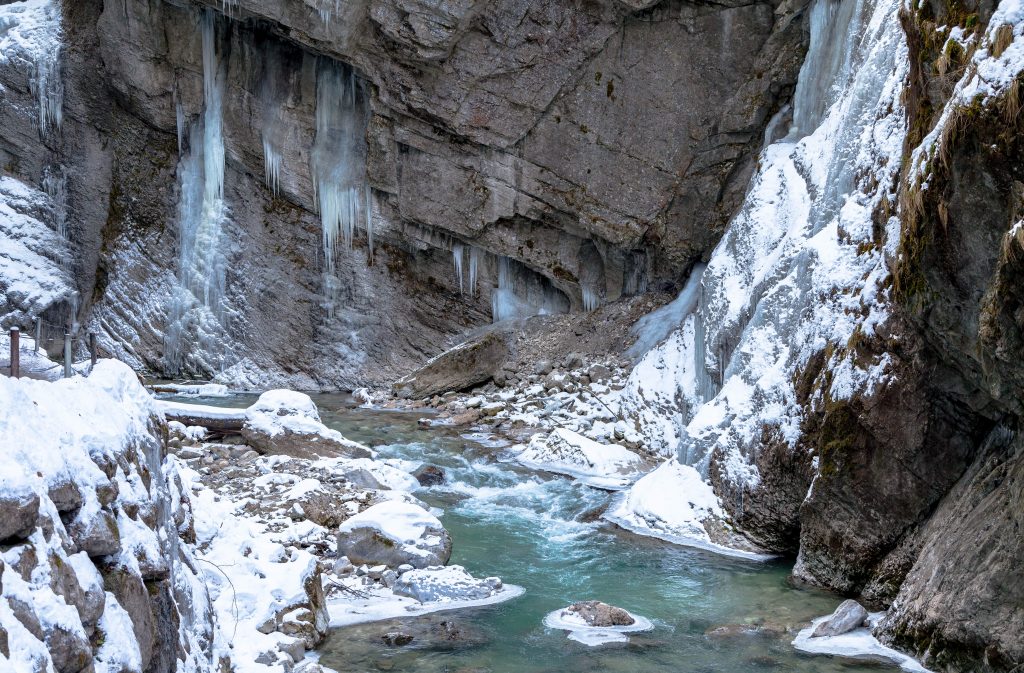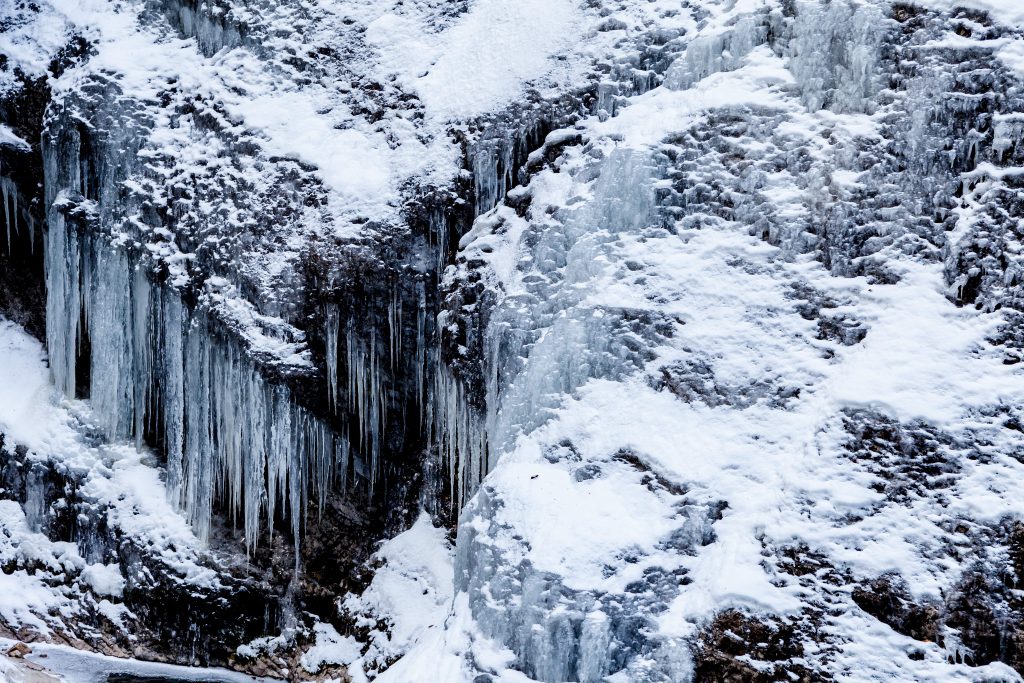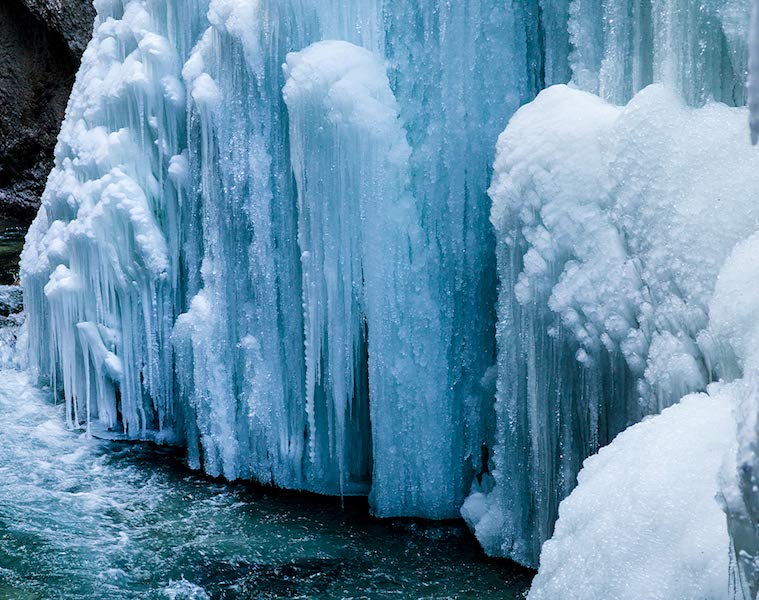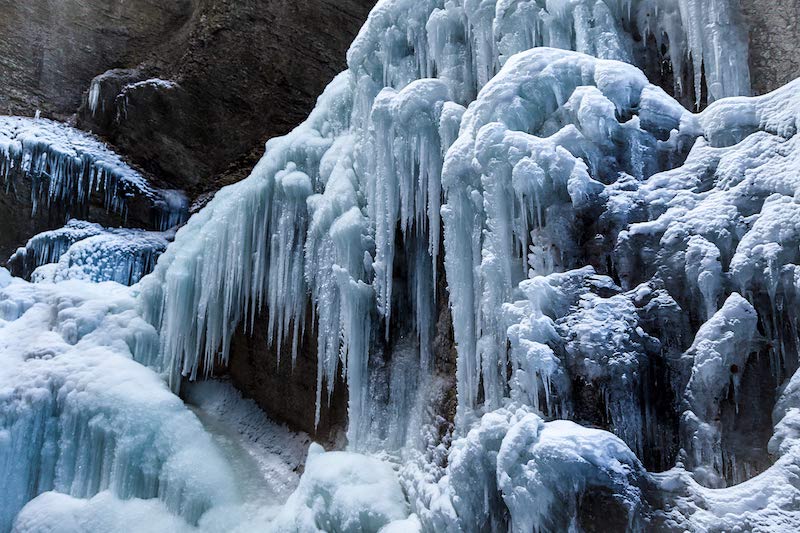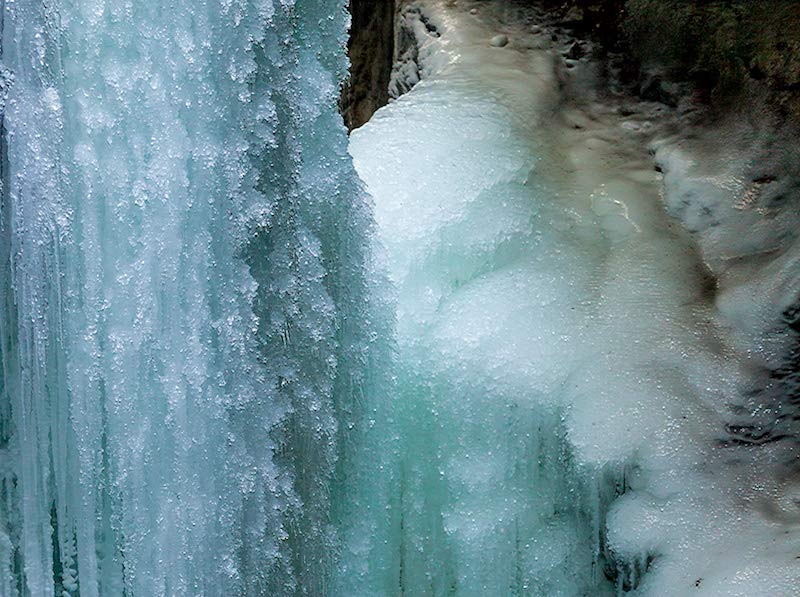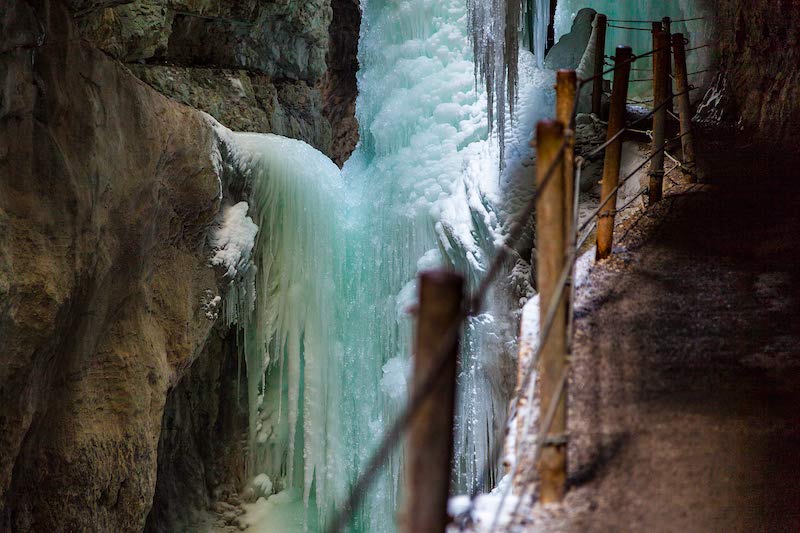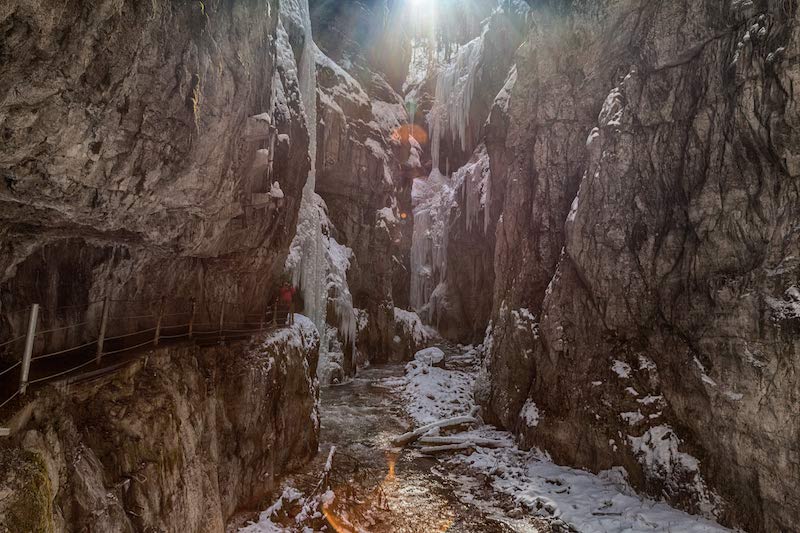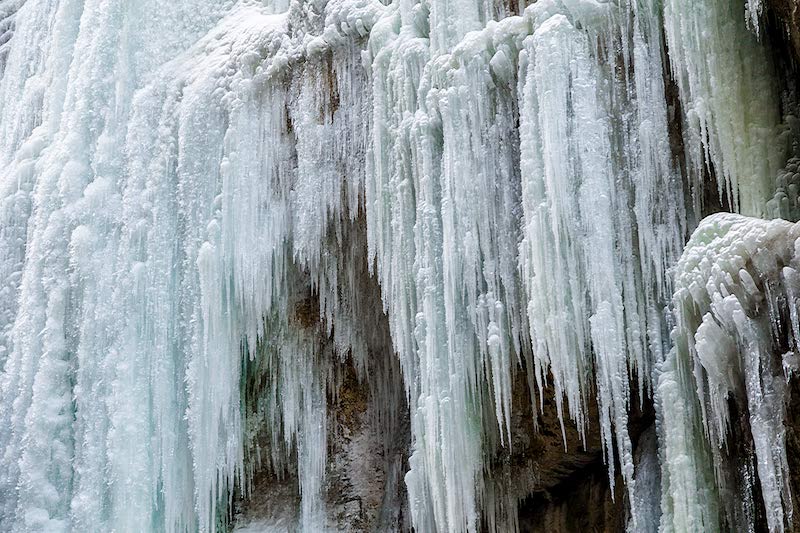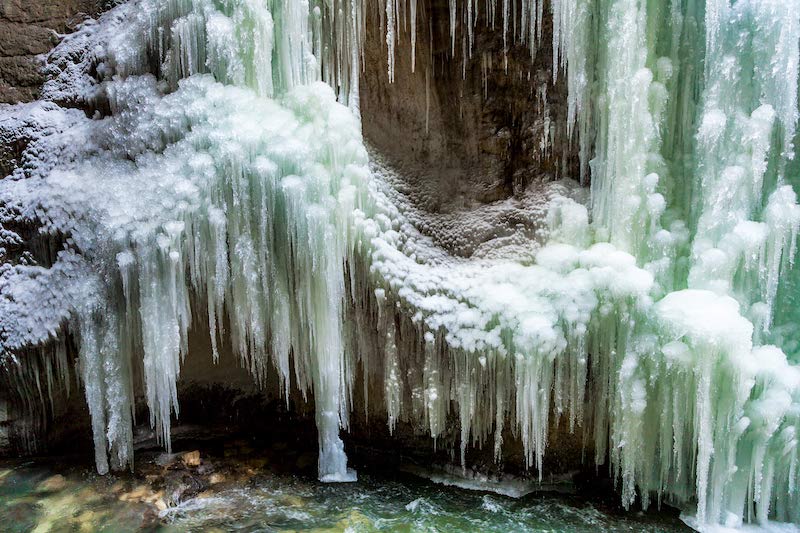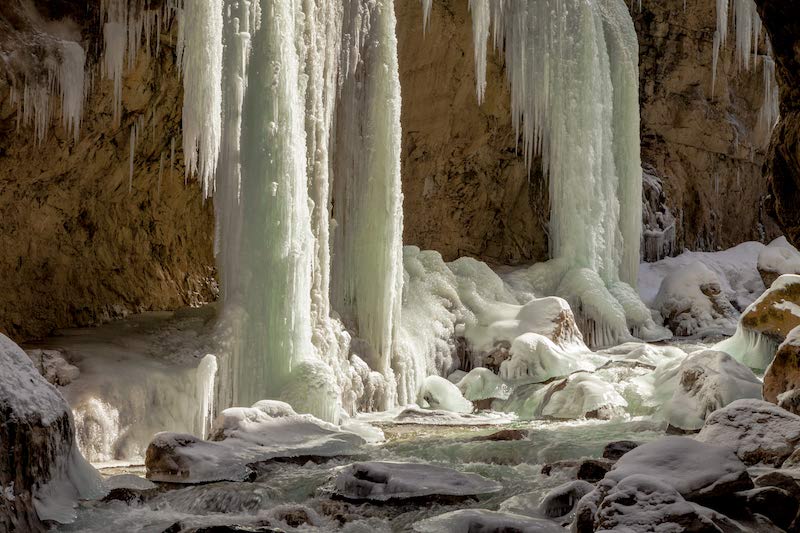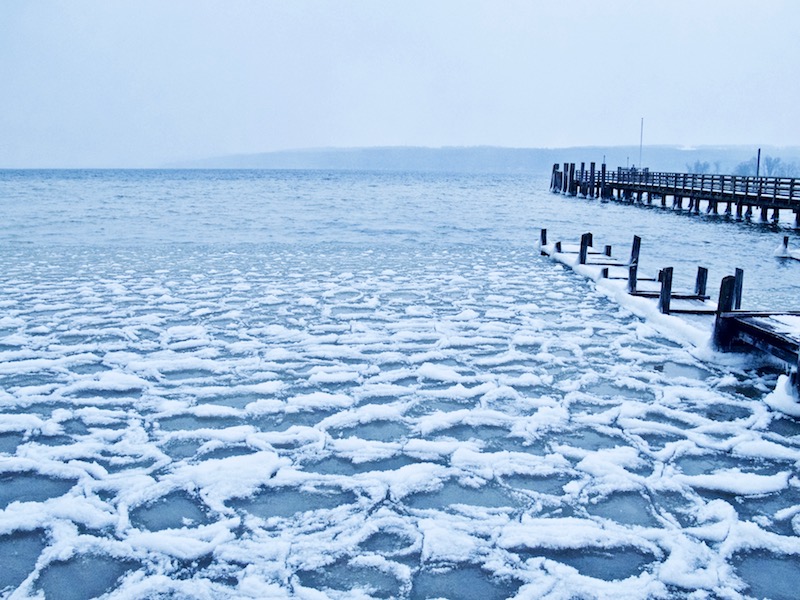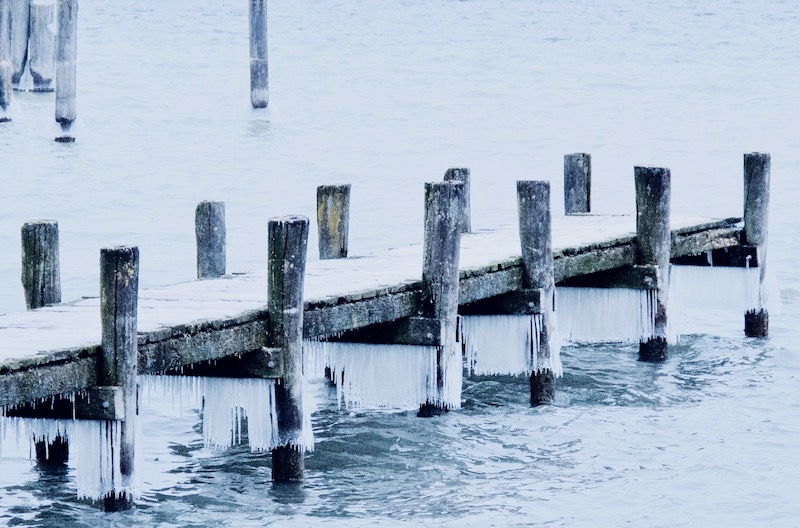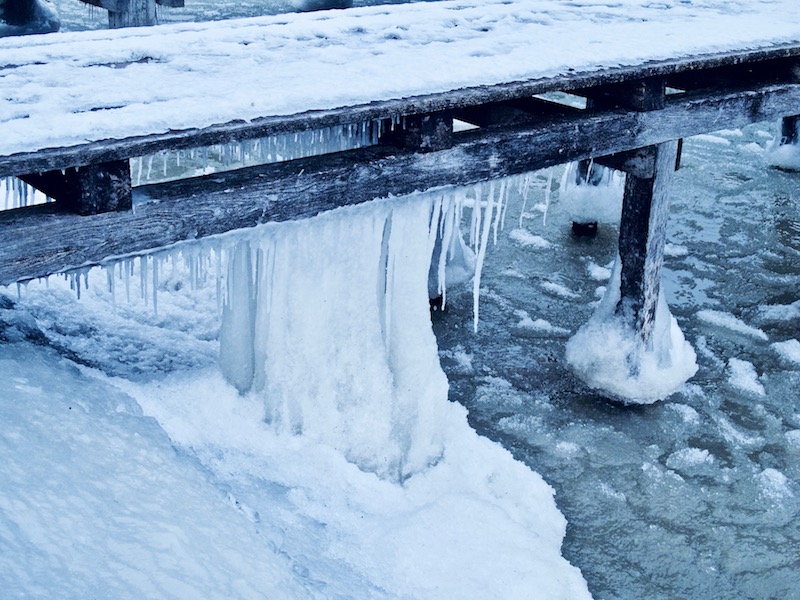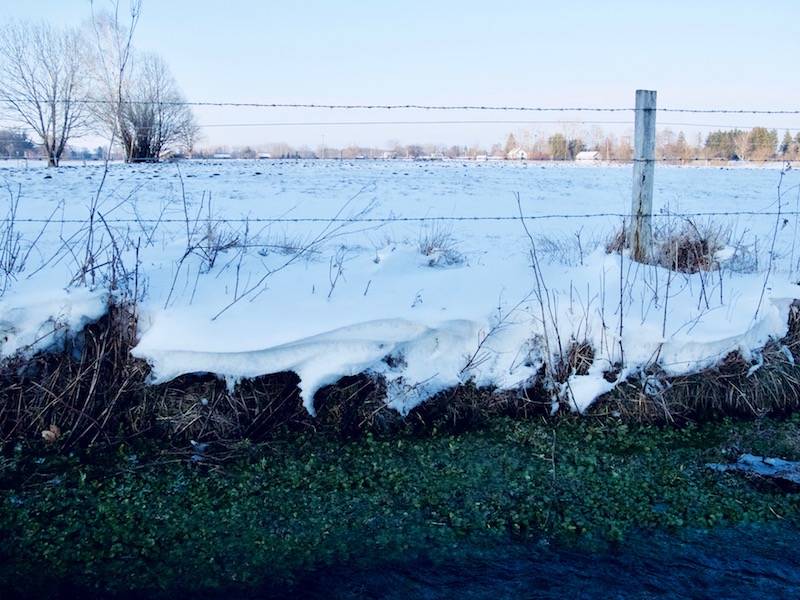3. März 2018: Partnachklamm
Als das sogenannte “Beast From The East”, die arktische Kälte in der zweiten Februarhälfte 2018 ihren Zugriff auf Mitteleuropa lockerte, dachte ich sofort an die Verwirklichung eines Planes aus dem vergangenen Jahres: einen Besuch in der Partnachklamm bei Garmisch Partenkirchen. Die berühmte Klamm ist ein großartiges Ziel zur Winterzeit wegen der fantastischen Welt aus gefrorenen Wasserfällen und Eisvorhängen. Die Klamm ist seit 1912 ein Naturdenkmal und wird jedes Jahr von vielen Gästen besucht.
Als ich letztes Jahr dort war, war die Klamm geschlossen, denn bei steigenden Temperaturen fallen große Eisbrocken herab, und dann ist es zu gefährlich, Besucher durch die 700 Meter lange Schlucht laufen zu lassen. Der Besitzer eines Berggasthofes in der Nähe erzählte mir, wenn die gigantischen Eiszapfen herabstürzen, erzittert im Haus alles wie bei einem Erdbeben. In manchen Jahren muss der Weg durch die Klamm aufwendig repariert werden. Es sind hier unvorstellbare Kräfte am Werk, und in früheren Zeiten war dies ein gefürchteter Ort. Die Klamm ist ein Monument ungezähmter Natur und verlangt Respekt; hier beginnt direkt vor der Haustüre Garmisch-Partenkirchens die Wildnis.
Dieses Jahr hatte ich Glück. Die kalten Temperaturen hatten Großartiges geleistet. Es war eine der positiven Seiten der arktischen Kälte.
Ich wußte, dass ich schnell handeln oder bis zum nächsten Winter warten müsste. Nach der extremen Kälte waren die Temperaturen am Samstag in Süddeutschland durch das Einströmen warmer Luft aus Nordspanien gestiegen. Die Windrichtung hatte sich geändert.
Zur Klamm gelangt man auf einem 25minütigen Fußweg vom Ski-Stadion in Garmisch-Partenkirchen. Sobald man dieses Wunder der Natur betritt fühlt man sich wie in einer Szenerie aus dem “Herrn der Ringe”.
Worte können die fantastische Erfahrung kaum beschreiben. Wie die Breitachklamm ermöglicht ein Wanderweg Besuchern die dramatische Atmosphäre des tobenden Flußes (der Partnach) und der nassen Felswände zu erleben.
Aber die Eisvorhänge, das Zusammenspiel von gefrorenem Wasser und Schnee, machen die Klamm zum einzigartigen Erlebnis in der Winterzeit.
Speziell auf den ersten 200 Metern gab es schon einige besonders beeindruckende Einblicke. Der Pfad verläuft nah an der Partnach, und man kann die Eisskulpturen hier aus der Nähe studieren.
Während der meisten Zeit des Jahres wird jeder nass der durch die Klamm geht, denn überall entspringen Quellen und von allen Seiten kommt das Wasser herunter. Deshalb sieht man aber jetzt im Winter diese fantastischen Eisvorhänge, wenn das Wasser, das normalerweise herunterregnet, gefriert.
Die Partnachklamm bietet eine Vielzahl großartiger Motive. Es sind dabei nicht nur die große Panoramen, sondern viele Details in dem “Eispalast” zu entdecken. Selbstverständlich teilt man jetzt den Wanderweg mit vielen anderen Fotografen und es empfiehlt sich früh am Tag aufzubrechen.
An bestimmten Punkten des Wanderweges erinnerte mich die Partnachklamm an die berühmten Eishöhlen, wie die “Eisriesenwelt” in Österreich. Wenn man durch die engen Teile der Schlucht geht, gibt es nur sehr wenig Licht und ein Stativ ist jetzt sehr hilfreich.
Der besondere Reiz der Partnachklamm wird auch gerade durch diesen Wechsel zwischen engen Stellen und geweiteten Passagen erzeugt.
Die Vorhänge aus Eis strahlen eine ganz besondere Magie aus. An manchen Plätzen erzeugt der grün-leuchtende Schein im Eis eine besondere, ja schon übernatürlich anmutende Atmosphäre innerhalb der Klamm.
Als ich mich dem Ende der Klamm näherte, fiel das Sonnenlicht herein. Das erzeugte noch eine andere Erfahrung und einen ebenso verzauberten Eindruck.
Die Partnachklamm kann leicht von Garmisch Partenkirchen in Bayern, Deutschland, erreicht werden. Von der Bahnstation gibt es einen Stadtbus zum Olympiastadium. Von dort aus fahren auch Pferdekutschen, und ein Hinweis kündigte sogar nächtliche Fackelwanderungen durch die Klamm an.
Die Klamm ist ebenso Ausgangspunkt für viele Wanderungen zu den höchsten Bergen Deutschlands. Berghütten und Almen sind nicht weit entfernt.
Wie schon gesagt, muss die Partnachklamm oft geschlossen werden, wenn das Eis schmilzt. Daher ist es immer gut, sich vorher zu informieren zum Beispiel auf der Webseite partnachklamm.eu.
Zu jeder Jahreszeit ist es sehr wichtig, festes Schuhwerk und geeignete Kleidung dabei zu haben. Der Wanderweg ist sehr gepflegt aber selbstverständlich kann es an solchen Orten immer mal rutschig oder matschig sein. Wenn man Bilder machen möchte ist es wegen der Enge des Pfades gut, ausreichend Zeit einzuplanen. Oft kommen einem Wanderer aus beiden Richtungen entgegen und wenn man nicht einen Stau erzeugen will, sollte man einen ruhigen Moment abwarten.
Neben Regenkleidung ist es auch wichtig, daran zu denken, die Kamera vor dem Wasser besonders im Sommer zu schützen.
Da die Klamm eine tief eingeschnittene Schlucht ist, ist im Winter das Sonnenlicht begrenzt. Als ich dort war, schien der späte Vormittag für den hinteren Teil der Klamm eine günstige Zeit zu sein.
https://youtu.be/wjonW9w9fY0
